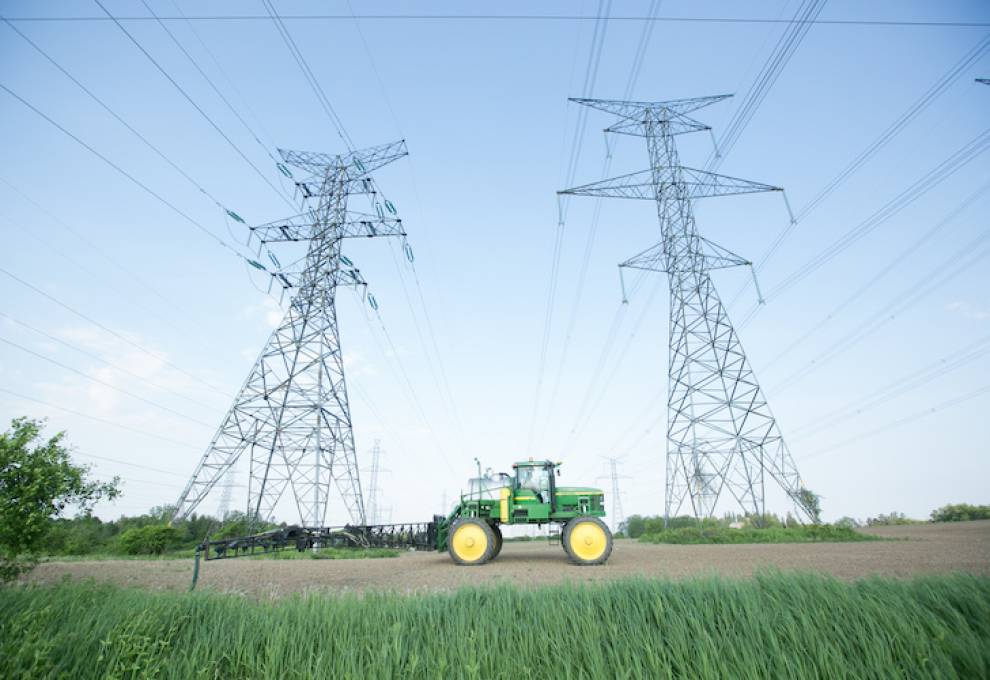
Risk management is something we all do constantly in our lives. Much of it totally subconsciously. Going outside (solar radiation and lightning), crossing the street, and driving the car all have some certain degree of hazard associated with them. How much we need to worry about something is what risk is referring to.
Risk is comprised of two parts, hazard and exposure. Hazard describes the inherent properties of a substance, organism, or action to cause harm. Exposure is how much and how frequently you come into contact with a hazard. For example, electrocution is a hazard of lightning. How often you go outside, especially in a thunderstorm, is the exposure. Risk is a function of this hazard and this exposure. Most of us choose to seek shelter in a thunderstorm to limit our exposure; we don’t worry much about getting hit by lightning. Yet lightning strikes still kill about 10 people a year in Canada – most view the overall risk as low, but it is not completely zero. Some risks we can control and others we can’t.
Voluntary risk
Alcohol consumption is known to be hazardous. There are certainly acute exposure levels that could result in direct death (i.e. drinking a lot at once). But there are also chronic exposure levels that can produce other negative health effects such as cancer. The government of the U.K. revised its alcohol consumption guidelines in 2016 based on a wide range of studies and analysis to help reduce alcohol-related illnesses in the population resulting from long-term drinking.
The new U.K. guidelines for alcohol consumption are the same for both men and women at a limit of 14 units of alcohol per week. Each unit is equivalent to 10 mL of pure alcohol. This translates into 6 x 473 mL pints of five per cent alcohol or six x 175 mL glasses of 13 per cent wine. The weekly limit is also suggested to be spread out evenly over at least three days, reducing the amount of consumption in any one day. People that consume above these guidelines are expected to have at least a one per cent greater chance of dying from an alcohol-related illness including cancer in their lifetime. Alcohol consumption represents a voluntary risk. One may choose to prevent their own exposure by not drinking at all. Others may choose that the risk is acceptable to them.
Involuntary risk
Today roughly 60 per cent of Ontario’s electricity needs are met by nuclear power plants. More than 9000 MW of output were being produced at three sites in the province at the time of writing. In fact, Bruce Power’s facility on Lake Huron is one of the largest nuclear power plants in the world. Nuclear radiation is of course inherently hazardous – we’ve all heard of Chernobyl and Fukushima. But I can’t remember any conversations I’ve had or seen on social media about risk from Ontario’s power grid.
A study by the Canadian Nuclear Safety Commission compared radiation doses and cancer cases of those people living within 25 km of the Ontario nuclear plants to that of the general population over 18 years. Radiation doses attributable to the nuclear plants were 100 to 1000 times lower than that of the natural background radiation found at the earth’s surface. Incidences of cancers in the communities within 25 km of these nuclear sites were similar to the general population of Ontario. In this case the risk is involuntary – I myself cannot control what happens at the power plant. However, the management of exposure by the reactor operation produces miniscule risk despite the well-known hazards. Acceptable safety thresholds for involuntary risks are understandably higher than voluntary risks.
Risk acceptability
Both voluntary and involuntary risks are managed to some degree of risk acceptability. Driving a car and the speed limit is a perfect example. In 2019, the Ontario government launched a proposal to increase the speed limit on three sections of 400-series highways to 110 kph from the current 100 kph. The proposal received widespread public support despite the hazards associated with driving faster.
The Insurance Institute for Highway Safety in the United States calculated the number of traffic fatalities per road mile following speed limit changes for every state over 25 years. The study found that a five mph (8 kph) increase in the posted speed limit was associated with an eight per cent increase in the fatality rate on interstates and freeways compared to the expected fatalities if the speed limit didn’t change. For Canadian context, British Columbia increased posted speed limits by 10 kph in many sections of provincial highway in 2014. Following the change, a University of British Columbia study found an 11 per cent statistically significant increase in injuries and fatal collisions.
While the specific results can be interpreted in each jurisdiction, there is an undisputable linkage between travel speed and serious and fatal road collisions. Ontario went ahead with the speed limit increases anyway. The feedback showed people valued convenience – even if statistics prove we will almost certainly see an increase in fatal incidents as a result. This is a publicly acceptable risk.
Crop protection
The same principles are applied to risk management of crop protection products. The Pest Management Regulatory Agency (PMRA) assesses the cancer risk for consumption of residues on treated produce. However, as this is considered involuntary, safety thresholds are far above things such as alcohol consumption and risk of traffic accidents.
The PMRA acceptance threshold for lifetime cancer risk resulting from dietary exposure to treated produce is less than 1 x 10-6 or one in one million persons over a lifetime. While risk is never totally zero, at this level it is considered to be ‘essentially zero’. Consider that every year in Canada one person per 3.7 million population is killed by lightning and one person per 20,000 population dies in a road collision. With crop protection, the risk of human health effect at less than one in a million – per lifetime not year – is pretty darn safe!

Add new comment